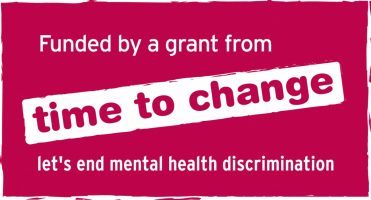Move a little more for better mental health
This year’s Mental Health Awareness Week theme is movement, and even moving a little more can better your mental health.
Movement is one of the 12 Emotional Needs we need to meet to stay well. It also supports us to meet many of our other needs, such as Sleep, Community and Achievement.
Physical activity and mental wellbeing are closely linked, and sometimes the best thing we can do for our mental health is to move around.
How does movement help our mental health?
Movement burns off the stress hormone, cortisol, and fills your body with feel-good endorphins. So you may feel less stress and generally better after some movement.
Your body will ‘reward’ you for movement with plenty of endorphins, especially if you don’t exercise regularly. But as you get into a routine of regular movement and get used to what you’re doing, your body ‘turns down the dial’ on your endorphins.
This should encourage you to do a little extra as time goes by.
How much exercise should we do to protect our mental health?
While nothing is guaranteed to improve our mental health, the UK Chief Medical Officers’ Guidelines recommend that adults should aim to do the following weekly:
“At least 150 minutes moderate intensity activity, 75 minutes’ vigorous activity, or a mixture of both, as well as reducing extended periods of sitting.”
Examples of moderate activity include:
- Brisk walking
- Riding a bike
- Dancing
- Pushing a lawn mower
- Hiking
Vigorous intensity exercise examples:
- Running
- Swimming
- Skipping
- Sports, like football, rugby, netball and hockey
- Martial arts
What if I’m not fit or sporty?
If you are not particularly active, or want to increase your activity levels, now might be a good time to set a goal!
Remember, set a goal to work to, but add in smaller milestones so you feel like you’re achieving along the way.
For example, a goal might be to jog a 5k. If you’re not a runner, that might be a huge undertaking. So, start small. Programmes like Couch to 5k or NoneToRun break the training down, and encourage you to celebrate each run you do.
Try to remember what you might have enjoyed in the past or imagine what you might enjoy now. For example, if you don’t enjoy the feeling of exertion associated with vigorous physical activity, but enjoy having a chat with someone, a brisk walk in the park with them might be a more enjoyable way to move. It will also get your out in nature which is proven to be good for wellbeing.
It is also worth thinking about the ways in which your chosen activities can meet your needs beyond Movement. Team sports such as football, walking football, hockey and netball can help us meet new people and feel part of a community.
Alternatively, mowing the lawn helps you smarten up your environment and get a sense of achievement while getting exercise.
If you already see a lot of people, hiking or a solo bike ride lets us engage with nature in a meaningful way whilst getting our need for Privacy met.
Getting active can feel like one more thing to fit into an already busy day. However, there are real benefits both physically and mentally, often for free and with added benefits.
Find out more about meeting your need for Movement.











